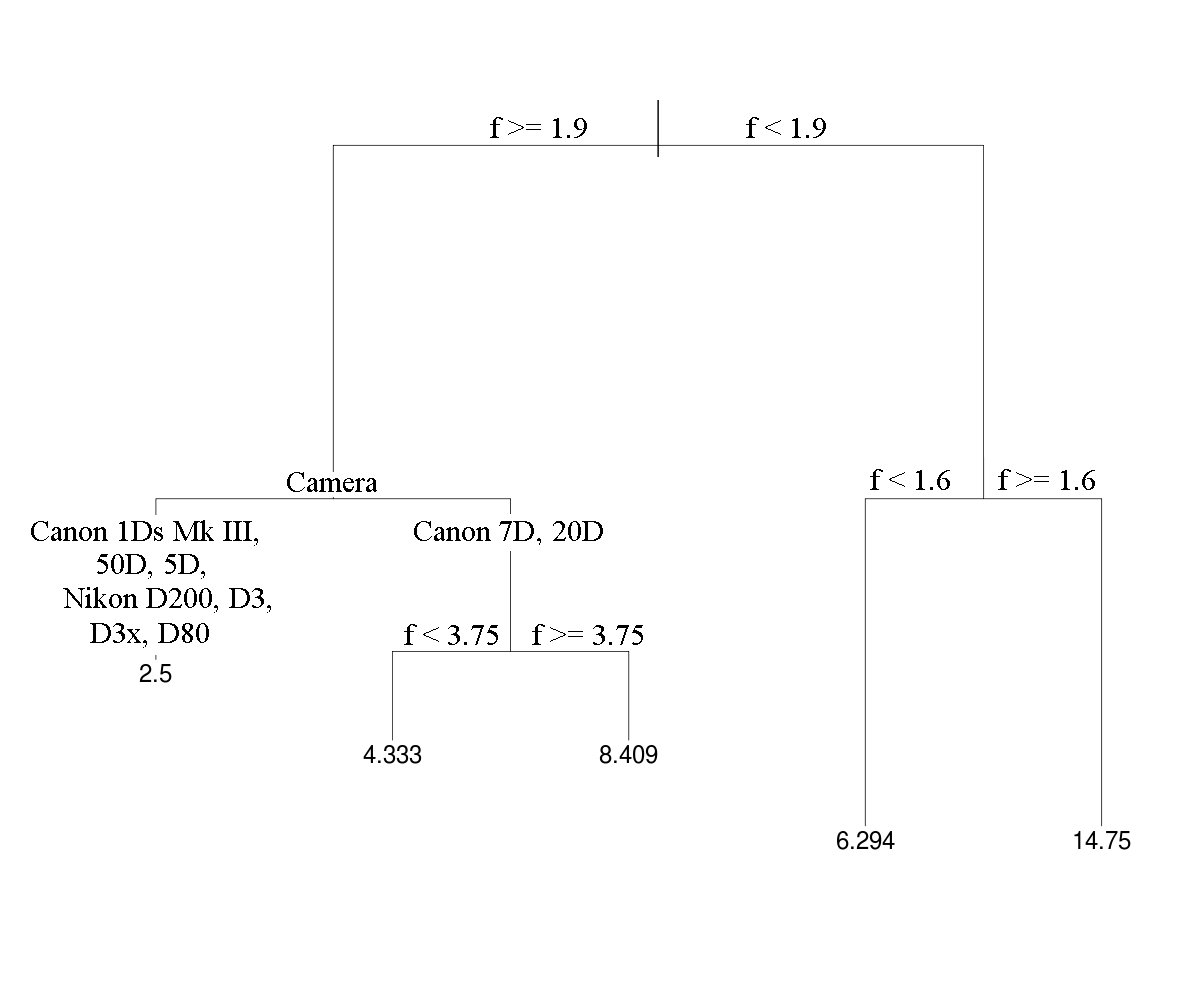fengniao.com. All rights reserved . 北京蜂鸟映像电子商务有限公司(蜂鸟网 FENGNIAO.COM)版权所有
京ICP证 150110号 京ICP备 15000193号-2
违法和未成年人不良信息举报电话: 13001052615
举报邮箱: fengniao@fengniao.com
你说对了,这个测试很长,楼顶只是最开始的一部分。
这个还有(更)科学的 佳能 pk 尼康:

上面分开是镜头的光圈大小,如果没有列相机,就说明所有相机都差不多。如果列了相机,就是这些相机是这个误差。7D和20D惨了,看来一声叹息没有错,对比50D,7D牺牲了精度,成就了速度。
顶一声叹息,太牛了!
另外,从这个图可以看出,如果镜头光圈超过1.6,平均误差是15%,不管用什么相机。所以大光圈导致对焦不准(主要是因为景深浅造成的)。不知道微距是不是也有这个问题。
有其他测试方面的图片和数据吗?
We can summarize the result as follow: body brand does not influence focus-errors contrasting with results shown in Figure 1. Finally, the most important factor is the aperture. Very bright lenses, mainly f/1.4, give poor results. This was predictable because of their shallow depth of field that requires fine calibration. Since the industry is counting mostly on zooms that reach a maximum aperture of 2.8, auto-focus systems are surely calibrated for these apertures and not for larger ones. Body construction also is optimized for those apertures – at least the viewfinder brightness. Indeed, just try and see a viewfinder brightness difference when using a f/2.8 zoom lens compared to a fast f/1.4 lens. Digital cameras do not show an increase in viewfinder brightness or a difference in depth of field while film cameras from 1960-1980 do (e.g. Nikon F2 with DP-12).
翻译太累了:
我们总结一下,相机对精度影响不大,最大影响是光圈(废话!)。大光圈定焦,主要是f1.4们,精度差。这主要是因为浅景深需要更细微的调焦。而且很多变焦更被重视(定焦反正也是手动对焦),所以生产商花费更多的精力调节变焦镜头的对焦精度,也就是最大光圈f2.8。相机的设计,也是根据优化这些变焦镜头的对焦系统而设计的。对于时间方面的进步,比如D3对F2,至少在光学取景器亮度和景深方面没有进步(这个相关吗?)
 0stephen82226
中级会员
虚线
0stephen82226
中级会员
虚线

第一区(好区)有如下相机,佳能1ds3,50D,5D,7D,索尼a200,a900,尼康d200,d3,d3x,d80,宾得K10D,噢巴E3,三星gx10。本组对焦平均误差为4.5%。
第二组(还需努力区)有:佳能1Ds2,20D,索尼a100,噢巴E510,宾得K20D,平均误差10%。
高速镜头(f1.4)误差比别的镜头高。
第三区是镜头区,表现最好的镜头是佳能,尼康,蔡司,其次是噢巴,宾得,索尼。腾龙和图丽垫底。值得一提的是适马,要么很好要么很差,看rp啦。对于施耐德和徕卡镜头,数据不足,没有结论(估计关键是没钱,施耐德和徕卡看到这个会不会捐镜头给他们呢?)
请输入正确的手机号码
请输入正确的验证码
发送验证码